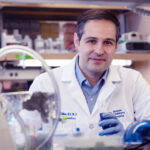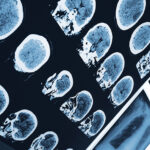Restoring muscle function in a rare, devastating disease: Part 1
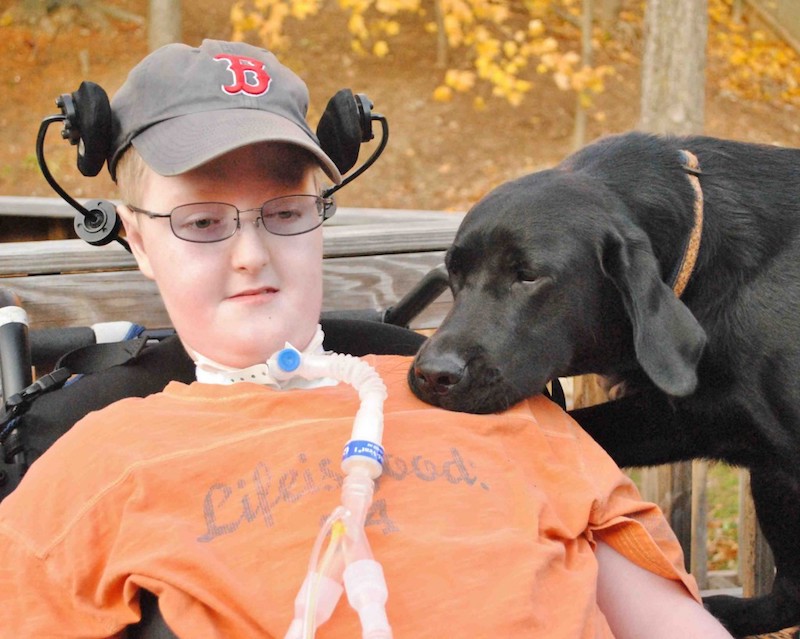
Part 1 of a two-part series. (Read part 2.)
Sixth-grader William Ward cruises the hallways at school with a thumb-driven power chair and participates in class with the help of a DynaVox speech device. Although born with a rare, muscle-weakening disease called X-linked myotubular myopathy, or MTM, leaving him virtually immobile, he hasn’t given up.
Neither has Alan Beggs, PhD, who directs the Manton Center for Orphan Disease Research at Boston Children’s Hospital, and who has known Will since he was a newborn in intensive care.
“From the very beginning, Alan connected with our family in a very human way,” says Will’s mother, Erin Ward. “In the scientific community, he’s been the bridge and the connector of researchers around the world. That makes him unique.”
Since the 1990s, Beggs has enrolled more than 500 patients with congenital myopathies from all over the world in genetic studies, seeking causes and potential treatments for congenital myopathies—rare, often fatal diseases that weaken children’s skeletal muscles from birth, often requiring them to breathe on a ventilator and to receive food through a gastrostomy tube.
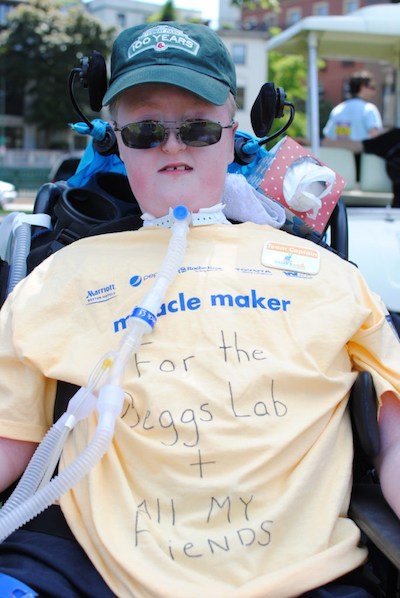
Beggs’s lab has helped identify many of the dozen or more known causative genes, and has studied the MTM1 gene that’s mutated in Will for many years, modeling the mutations’ effects in animals and examining their impact on children’s muscles. Now, after 20 years, he’s at the brink of seeing his work finally translated into a treatment that could help patients get stronger. If either of two approaches being tested succeeds, it would be the first directed therapy for any congenital myopathy.
“There are hurdles to clear during this last push,” says Alison Frase, whose son Joshua passed away from MTM two years ago, and who, with her husband, founded the Joshua Frase Foundation, which has supported Beggs’s lab for almost 16 years. “But the trans-Atlantic team of scientists whom Alan has brought together has accomplished some miraculous milestones.”
Moving a muscle
Normally, when a muscle needs to move, calcium rushes into the muscle cells and sets off a contraction. Stores of calcium are held at the ready in sausage-shaped structures called T-tubules, maintained by an enzyme called myotubularin that is encoded by the MTM1 gene. But in children with MTM1 mutations, like Will and Joshua, myotubularin is absent or dysfunctional. As a result, Beggs and his collaborators have shown that the T-tubules are disorganized and leaky.
“The calcium is not going where it should be,” says Beggs. “It is not available to surge into the cell. The last step in triggering a muscle to contract is disrupted.”

In 2008, Beggs and collaborators in France reported a successful fix in mice: gene therapy, using an injected virus to carry a healthy MTM1 gene into the muscles. Muscle structure, volume and contractile force all improved, and in follow-up research, the animals’ lifespans—normally shortened to two months by MTM—were prolonged to more than six months.
Beggs needed to test gene therapy in a larger animal before it could be attempted in humans. At a scientific meeting, he heard about some Labrador retrievers that had a disease very much like MTM. He mentioned this to Frase, who had become a professional collaborator, helping raise awareness and money for MTM research while lending support to families.
“Alan told me that a researcher thought she saw Joshua’s muscle disease in a dog,” says Frase. “We had a pretty good hunch that this dog had an MTM1 mutation.”
Nibs
Hoping to do genetic studies in the Labrador retrievers, Beggs contacted the researcher, G. Diane Shelton, DVM, PhD, a veterinary pathologist at the University of California, San Diego. Shelton then introduced Frase to the vet in Canada who was treating these dogs.
“The vet located a family with two affected puppies,” says Frase. “I called the owner and explained to him about Joshua, where we were in the research, and how we needed a large animal model. Before I could even finish my story, he said, ‘I want to give you my dog Nibs.’”
Nine days later, Frase flew from Florida to Saskatoon to meet Nibs, the puppies’ healthy mother, at the airport. They instantly bonded. “She was a genetic carrier, just like me,” Frase said.
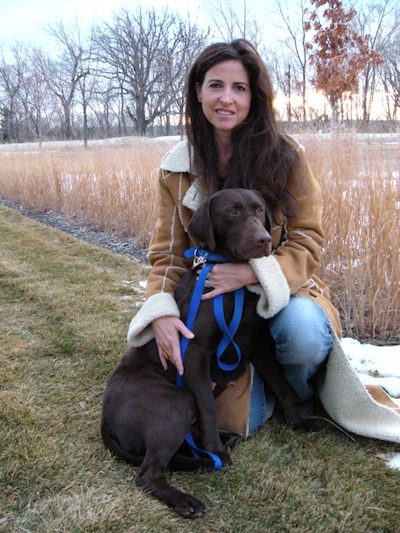
That was the start of the world’s first MTM dog colony, established at the Wake Forest Institute of Regenerative Medicine in Winston-Salem, N.C., with funding from the Joshua Frase Foundation and in collaboration with Casey (Martin) Childers, DO, PhD. Childers, now at the University of Washington, had previously studied golden retrievers with a form of muscular dystrophy.
Within weeks, Beggs, Shelton and colleagues in France confirmed that Nibs carried an MTM1 mutation, as did seven male Labs with the same syndrome. Nibs produced a litter of 12 puppies, including five carrier females and one affected male pup. Today, the colony has more than a dozen carriers, many of which have been bred. (Will Ward’s family adopted two healthy, non-carrier dogs from the colony.)
The diseased dogs are clearly benefiting from gene therapy. At a conference late last year, Beggs, Childers and colleagues in France reported improved leg strength and diaphragm function during breathing—to near-normal levels. The muscles bulked up, had larger fibers and showed fewer pathological features. “To date, the dogs that have received gene therapy have survived to four times the age of their untreated littermates with MTM,” says Frase.
As for Nibs, she eventually was returned to her Canadian owner. “I felt I needed to bring her home,” Frase says. “She did what she needed to do for me. When she took off and ran for her original owner at the airport, I knew I had done the right thing.”
Part 2 will look at the promise of enzyme replacement for congenital muscle disorders.
Related Posts :
-

A case for Kennedy — and for rapid genomic testing in every NICU
Kennedy was born in August 2025 after what her parents, John and Diana, describe as an uneventful pregnancy. Soon after delivery, ...
-

The journey to a treatment for hereditary spastic paraplegia
In 2016, Darius Ebrahimi-Fakhari, MD, PhD, then a neurology fellow at Boston Children’s Hospital, met two little girls with spasticity ...
-

The dopamine reset: Restoring what’s missing in AADC deficiency
In March 2023, a young girl came to Boston Children’s Hospital unable to hold up her head — one striking symptom ...
-

Thanks to Carter and his family, people are talking about spastic paraplegia
Nine-year-old Carter may be the most devoted — and popular — sports fan in his Connecticut town. “He loves all sports,” ...



